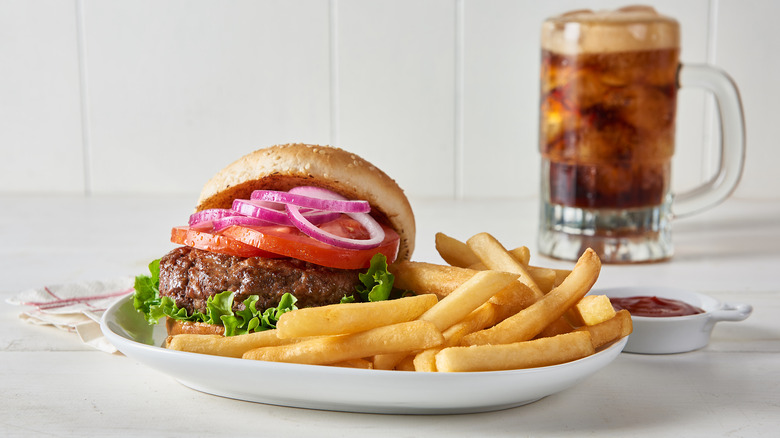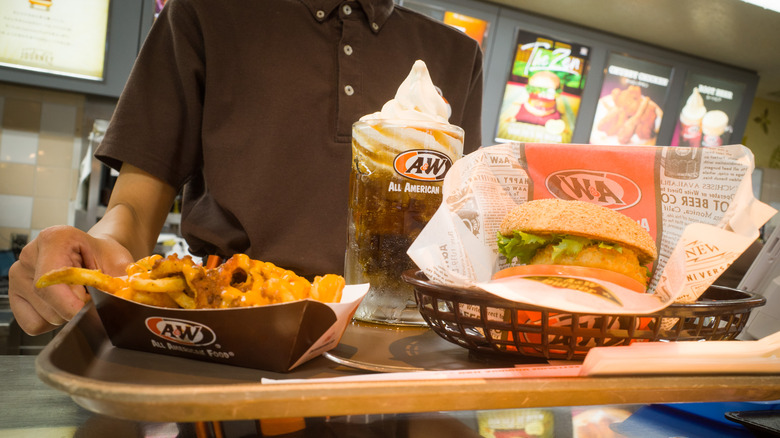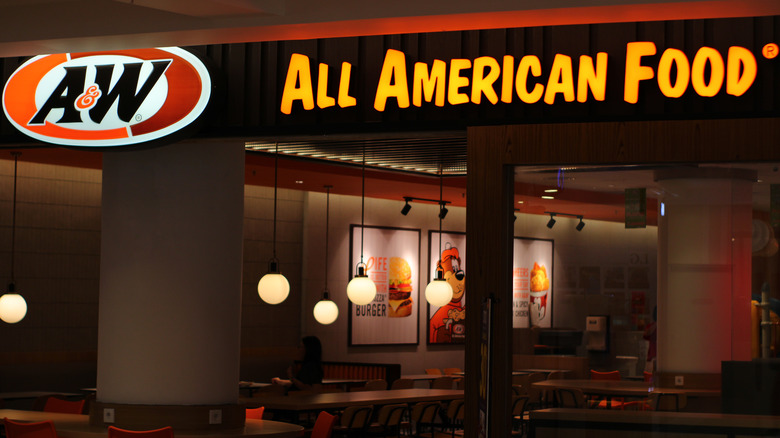What Was The First Restaurant Chain In America?
What's more American than apple pie? In the 21st century, fast food seems like a good bet. Restaurants have ancient roots predating the formation of the United States, but 20th-century self-serve "Automats" and "smash-and-grabs" are the precursors to modern fast food, according to Encyclopedia Britannica. By 1921, these transformed into what's widely considered the first fast food chain: White Castle. This Kansas company used an assembly line of workers to streamline food service and keep prices as low as five cents a burger. White Castle may indeed be the first fast food chain, but it's actually not the first restaurant chain in America, which is just one of a dozen White Castle secrets you're not supposed to know.
Regardless, fast food exploded in popularity from there, and now, chains such as A&W Restaurants, Burger King, McDonald's, Subway, and Taco Bell are iconic brands. As author Adam Chandler noted in his interview with Smithsonian Magazine, this trend was spurred on by the development of suburbia and the nation's vast highway system. That also helped promote the drive-thru — now synonymous with fast food. Nowadays, fast food chains are practically everywhere, while trends like automation, franchising, and third-party delivery continue to revolutionize the quick service sector of the industry. Fast food is so widespread that even the first American restaurant chain, although not originally a fast food establishment, is now officially considered one.
A&W Restaurants began in 1919
When you think of A&W, there's a strong chance you'll imagine root beer (it's one of the best root beers for making root beer floats, after all). The A&W Restaurants are equally iconic, though. As documented by YouGov, nearly 90% of Americans have apparently heard of this food brand and only about 5% of the population allegedly dislikes it. Among dining brands, it impressively ranks 26th place, with older generations like the Baby Boomers particularly enjoying it. This makes sense, as the restaurant chain proliferated throughout the 20th century.
A&W Restaurants started in 1919 as a roadside stand selling (fittingly) root beer. As such, while it didn't sell food in those early days, it is technically the oldest restaurant chain in the United States. By 1922, per Nation's Restaurant News, founder Roy W. Allen and employee Frank Wright were teaming up to open a brick-and-mortar location, and the business soon franchised, as well. More A&W (Allen & Wright) sites popped up, the company was sold, and the business even went international. Then, at some point, food did become involved; notably, A&W unveiled the first bacon cheeseburger in 1963. By 1971, its root beer was being sold in cans and bottles, accounting for its well-known reputation as a soft drink. Nevertheless, A&W's food is still a big draw, and hundreds of A&W Restaurants exist worldwide.
A&W is still spreading cross-country
A&W has got quite the claim to fame and is indeed widespread, but how are the restaurants actually faring these days and what are the company's plans for the future? The pandemic was obviously bad news for all of food service, but A&W Restaurants managed to weather the storm. As reported by Market Scale in late 2021, A&W was able to avoid layoffs during the first year or so of Covid, at least. The business is also now totally owned by its franchisees and was eyeing expansions into the American Southeast and Southwest going into 2022.
A bit more recently, in late '22, Restaurant Dive reported A&W Restaurants was shifting its strategy to non-traditional growth in venues like airports, convenience stores, grocers, stadiums, theme parks, and universities, which are cheaper to operate in and help funnel customers towards them. Jack Palumbo, senior director of franchise development, explained, "The brand is as popular as it's ever been," and so, "It just seemed like it was a really good time to capitalize on that." This comes on the heels of a decade of growth, with sales up roughly 66% since 10 years ago.
A&W Restaurants turned 100 years old in 2019. However, after a century of being in business, the oldest restaurant chain in America is still reinventing itself. So, perhaps it's more accurate to say it recently turned 100 years young!


